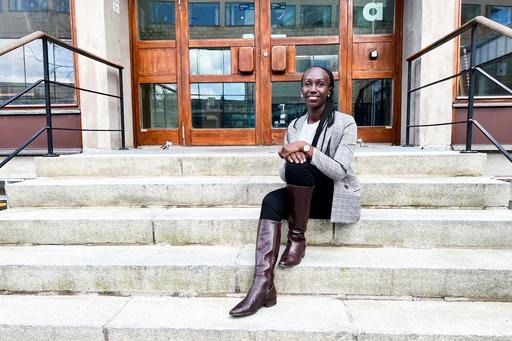
- Home
- Research
- Find research
- She seeks solutions to malnutrition in Rwanda
She seeks solutions to malnutrition in Rwanda
A major research project is underway in Rwanda to investigate the factors that lead to malnutrition among young children, with the aim of enabling more children to grow and develop normally. One of the researchers working on the project is Diane Rinda, a doctoral student at both the University of Gothenburg and the University of Rwanda.
As in many other low-income countries, malnutrition is common among young children in Rwanda. In rural areas, one in three children under the age of five can suffer from malnutrition, and in some places the problem can be even more prevalent. The government has begun several initiatives that have been effective in some areas but not in others.

“Malnutrition is a complex problem that needs to be tackled from all angles, and that is the beauty of the multidisciplinarity in this project” says Diane Rinda. “The factors related involve a range from individual, access to health care, education on health nutrition, food access, agriculture, water technology, geographical conditions, family structures, psychological factors as well as gender equality. The factors that need to be addressed span from region to household to individual.”
For young children and adults, malnutrition can have very serious consequences on individual level and the future generation. Lack of energy and nutrients can affect both physical and mental development, and in the worst cases this can lead to chronic injuries.
Interdisciplinary project
Rinda is an epidemiologist with nursing background and a doctoral student in the large collaborative project between the University of Rwanda and Swedish universities funded by the Swedish International Development Cooperation Agency. I meet her after spending her first two months at the University of Gothenburg. She will soon return to Rwanda and her family and then come back to Sweden again in the autumn.
The interdisciplinary project focusing on malnutrition involves a total of eight doctoral students and two post-doctoral researchers from different disciplines. The aim is to understand key factors that can be addressed to reduce maternal and child malnutrition
The project has already collected data in all districts of the Northern province. About 630 households have been visited by data collectors, who asked mothers with small children (up to three years of age) a series of questions, formulated in a questionnaire pre-designed by the research team.
“The questionnaire contained questions on sociodemographic and psychosocial factors, health issues related to the baby and the mother, issues such as violence in the family, mothers’ mental health, gender issues, eating habits, agricultural issues and availability of livestock in the household. In addition, Geographical Information Systems (GIS) assist in mapping access to clean water, soil quality, weather conditions, distance to health care services and other factors,” says Rinda.

Comprehensive research materials
Physical examinations have also been conducted in households. The research information collected includes data on anthropometry (human body measurements), blood, and stool samples. On the other side some information was collected regarding the quality of milk consumed, storage of livestock among others.
Another project involves Diane Rinda’s work on her thesis is establishing a maternal and newborn registry in Rwanda, adopted from the Swedish medical birth registry. With the aim of rolling out the registry, she has started the collection of some information related to maternal and child outcome, such as antenatal care, obstetric complications, nutrition and low birth weight.
A country moving forward
With her expertise, Rinda will be able to contribute to positive developments in her country in research, capacity building of health care staff in the area of Maternal child and community health The terrible history of 1994 genocide against the Tutsi has affected the Rwandan population in general. She was born in a a neighboring country of Democratic Republic of the Congo, where her parents fled after ethnic unrest in Rwanda in the 1960s.
“I arrived in Rwanda at almost the age of six, a few months after the genocide was terminated. I was only a child, but I still remember seeing dead bodies on the ground.”
She adds:
“Today Rwanda is a resilient country with a remarkable progress in all sectors. Unity and reconciliation were the only way to rebuild the county through forgiveness.”
Rwanda is progressing, with significant development in all sectors: health, governance and education. The country has observed a significant reduction of maternal and child preventable death. A well-functioning health system from Community health workers, with promotion of gender equality and education for all.
“The government-initiated school feeding program recently as one of many solutions to tackle undernutrition. Although the country is still fighting with poverty issues, all sectors are working hand in hand, supporting research-based evidence and innovations to tackle poverty and malnutrition among other issues.”
BY: ELIN LINDSTRÖM